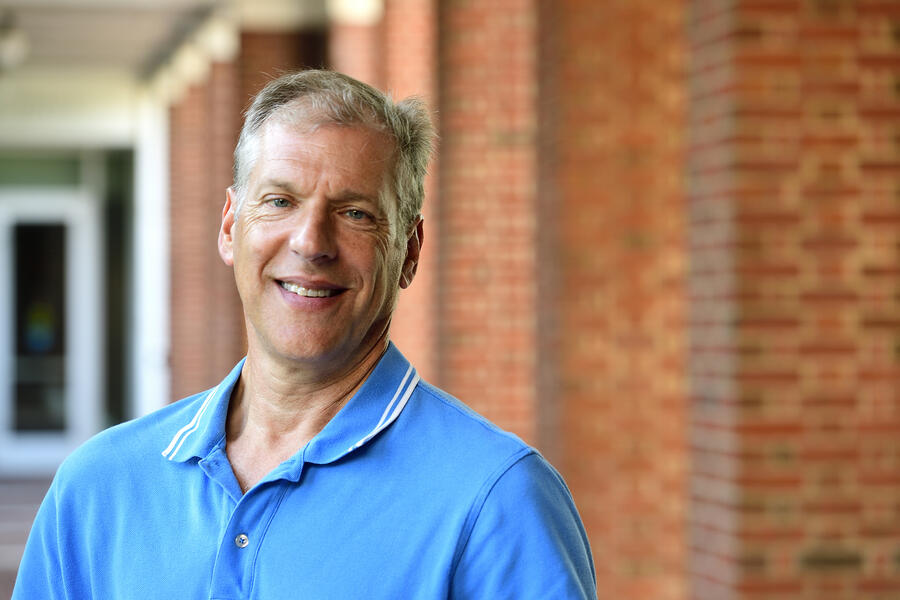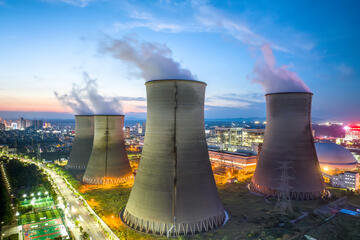World-renowned energy scientist Daniel Kammen is working to transform the way the world produces and consumes energy, advancing the frontiers of renewable energy and smart energy systems to meet the urgent demands of our changing planet.
Kammen, an expert in renewable energy, climate policy, and sustainable development, joins Johns Hopkins University as a Bloomberg Distinguished Professor of the Just Energy Transition. His research combines advanced modeling of energy systems with practical implementation. From designing mini-grids for rural communities, to decarbonizing residential water heating in California, to studying and advancing the innovation to implementation cycle, to advising on national climate strategies, Kammen has consistently been a leader in energy transformation. His work also explores the social and economic factors that influence the adoption of clean energy technologies and their impact on communities worldwide.
"Clean and sustainable energy should be made available to all, not just the privileged," Kammen says. "We need clean energy for the planet, but we need energy to meet the needs of everyone. My job as a physicist is to not only address the basic theory of smart energy, but to build the hardware and to help with its deployment. I work on novel ways to look at energy in a decentralized way that meets the needs of everyone. I want to see us close the electricity access gap for the nearly 700 million people on the planet who still don't have access to electricity."
About the BDP
- Name: Daniel Kammen
- Title: Bloomberg Distinguished Professor of the Just Energy Transition
- Appointments: Department of Civil and Systems Engineering, Whiting School of Engineering; School of Advanced International Studies
- BDP Cluster: Sustainable Transformations and Energy
- Previous Role: University of California, Berkeley
- Education: AB in Physics, Cornell University; MA in Physics, Harvard University; PhD in Physics, Harvard University
Kammen comes to Johns Hopkins University from the University of California, Berkeley, where he was the founding director of the Renewable and Appropriate Energy Laboratory and the James and Katherine Lau Distinguished Professor of Sustainability. Kammen brings decades of experience developing scalable, equitable energy solutions and designing policy frameworks that support sustainable development. His work is at the cutting edge of renewable energy deployment, emphasizing energy justice and climate resilience as core pillars of a sustainable world. Kammen has been recognized for his contributions to climate science and policy, including contributing to the Nobel Peace Prize for his work on the U.N. Intergovernmental Panel on Climate Change. In 2020 he was elected to the American Academy of Arts and Sciences, and in 2025 was elected to the National Academy of Sciences.
At Johns Hopkins, Kammen will be part of the Sustainable Transformations and Energy BDP cluster. Kammen has spent his career bringing together scientists, government agencies, and industry partners and hopes that the potential for interdisciplinary collaborations and Johns Hopkins' presence in Washington, D.C., will open up new avenues for his research, policy, and advocacy work. Kammen has served as chief technical specialist for Renewable Energy and Energy Efficiency at the World Bank, member of the National Advisory Council for Environmental Policy and Technology for the U.S. Environmental Protection Agency, Science Envoy in the Obama Administration, and senior adviser for energy and innovation at the U.S. Agency for International Development in the Biden Administration. He has testified in front of legislative committees at the state and federal levels over 40 times and has published 12 books, over 500 research articles, and over 100 technical reports.
"My whole career, I've been learning how to become not just a physicist who dabbles in social science, but a physicist who respects and works with disciplines far from his own," says Kammen. "Early on, the technical aspects—the materials science, the solar physics—were the hard part. While we still have more work to do on the STEM side of energy, the harder side now is governance, justice, policy, engagement—the social side."
Kammen hopes to contribute to efforts towards a society powered mostly by fusion, both solar and terrestrial. Fusion occurs when two nuclei combine, forming a new nucleus and releasing energy in the process. Fusion occurs naturally in the sun, and is replicated by researchers using electric and magnetic fields. It uses common materials such as deuterium and tritium for fuel, and its primary by-product is helium. The process does not emit carbon dioxide or other greenhouse gases, making it a promising clean energy source.
Kammen also looks forward to working with students, who bring a fresh perspective—and energy—to existing challenges.
"Students will work infinitely hard on infinitely hard problems and not be discouraged," says Kammen. "It's not that they don't know any better, I think it's that they believe you can fix these things."
"Professor Kammen brings a rare blend of technical expertise, visionary thinking, and policy acumen to advancing access to renewable energy," says Ed Schlesinger, dean of the Whiting School of Engineering. "His broad knowledge is sure to spark new collaborations across the university and beyond."
"Professor Kammen's work at the intersection of renewable energy and global policy exemplifies the kind of forward-thinking scholarship that drives real-world impact," says Jim Steinberg, dean of the Johns Hopkins School of Advanced International Studies. "He has an extraordinary track record in leading multi-stakeholder collaborations across continents and will elevate our institution's contribution to sustainable development worldwide."
Posted in Science+Technology, University News
Tagged bloomberg distinguished professorships, renewable energy









